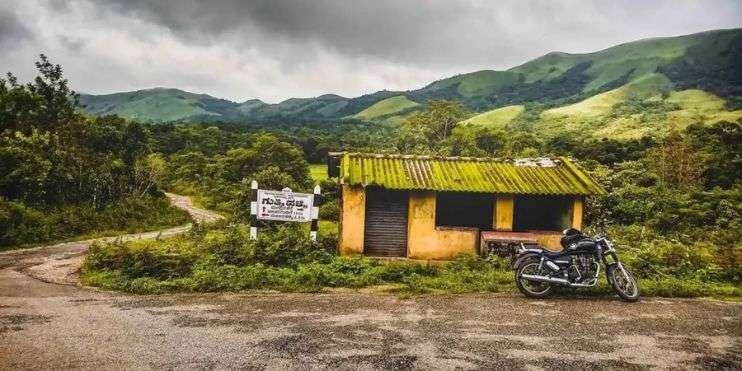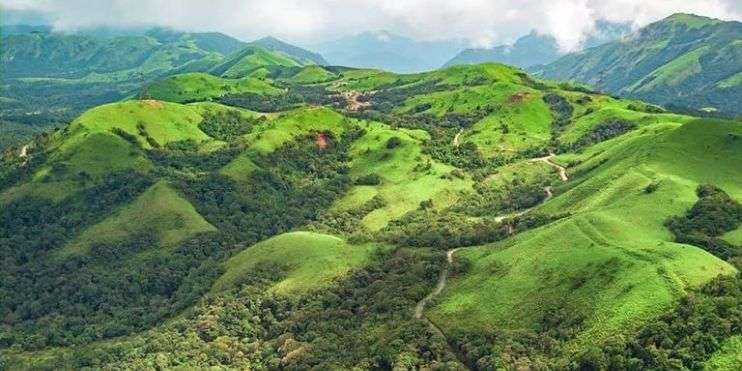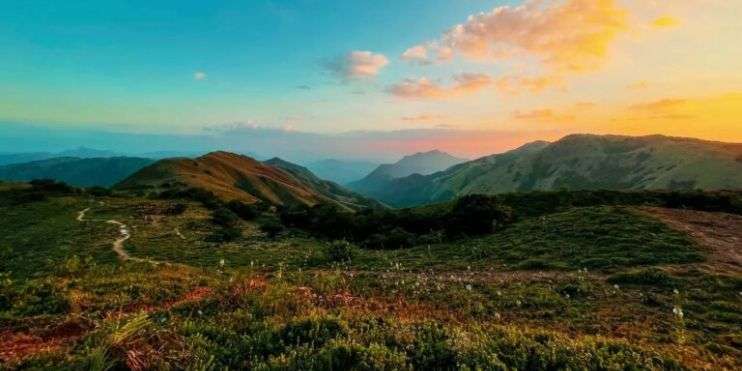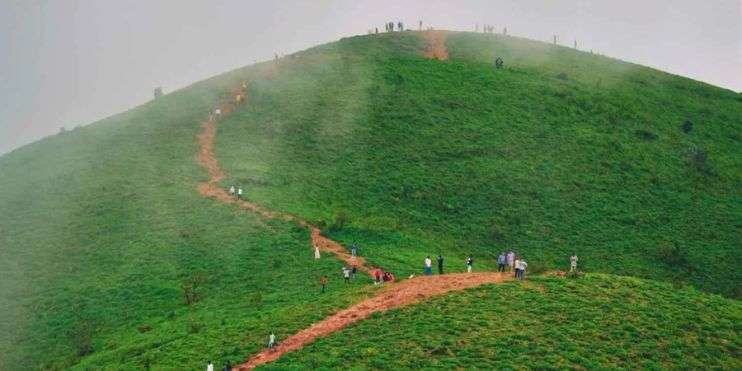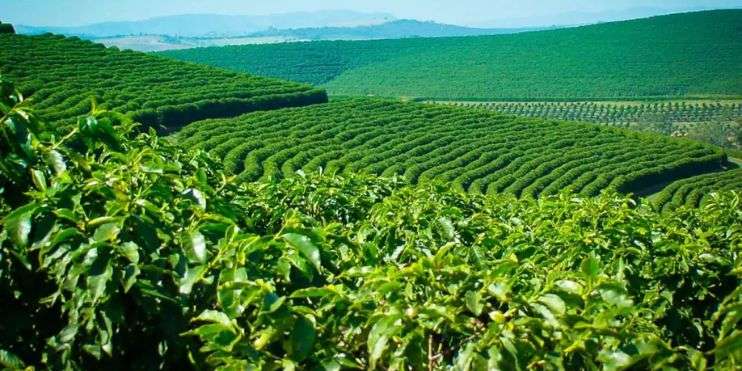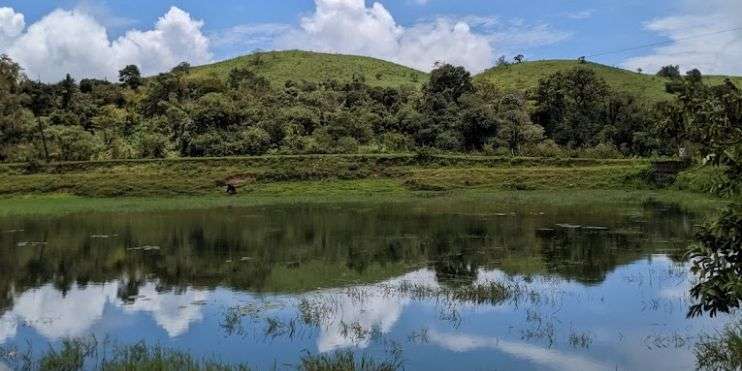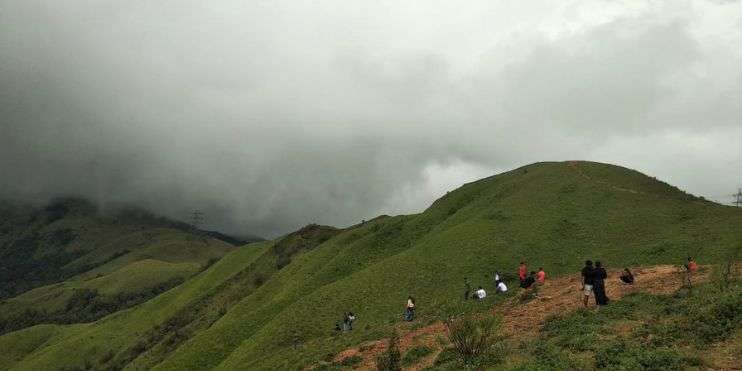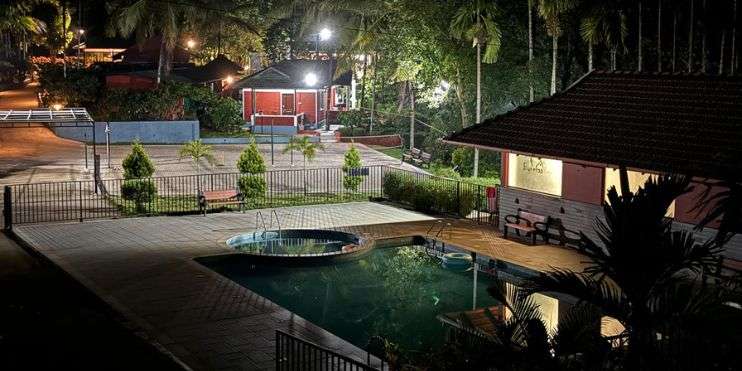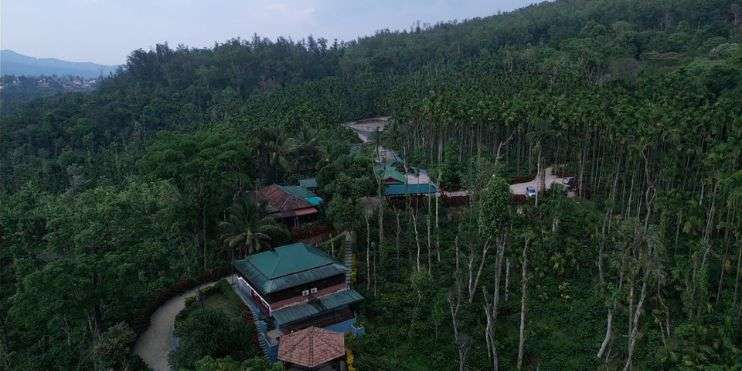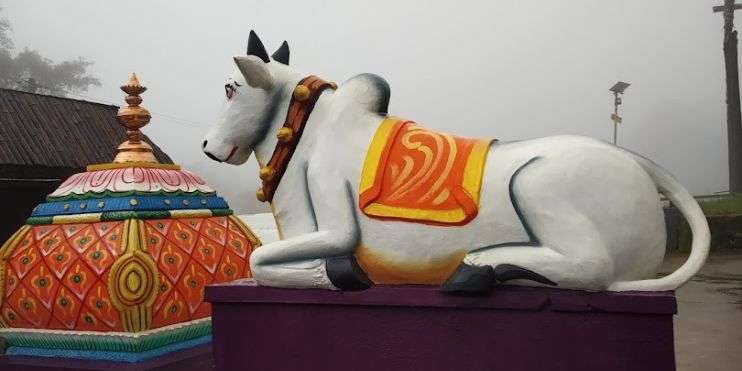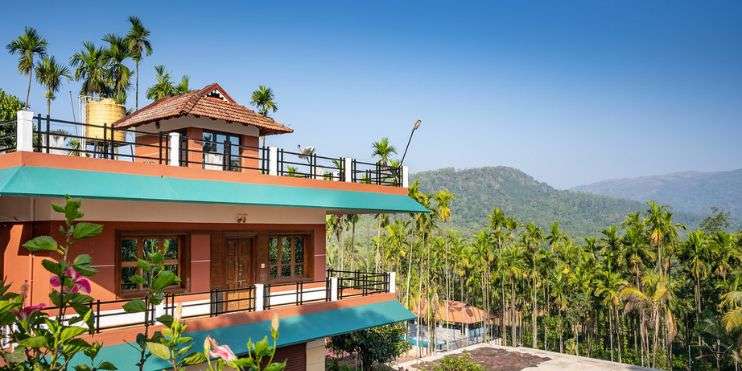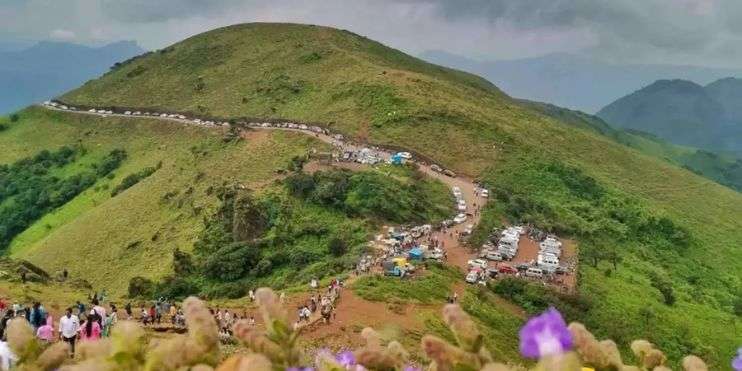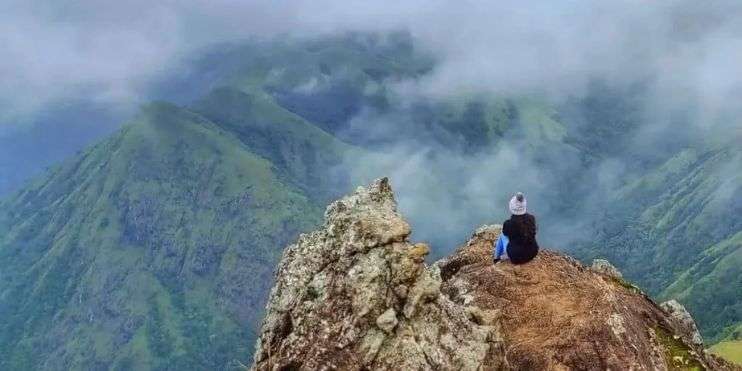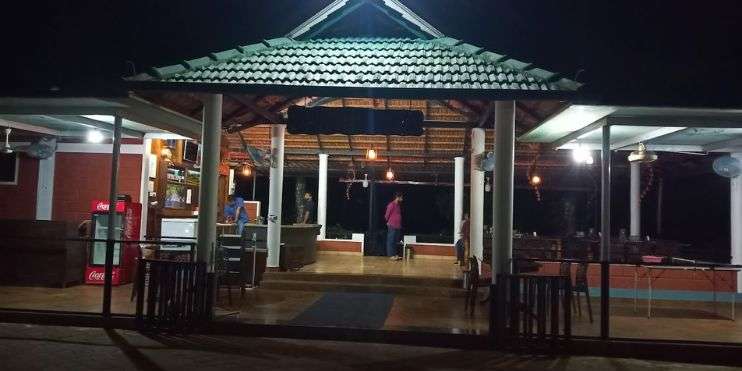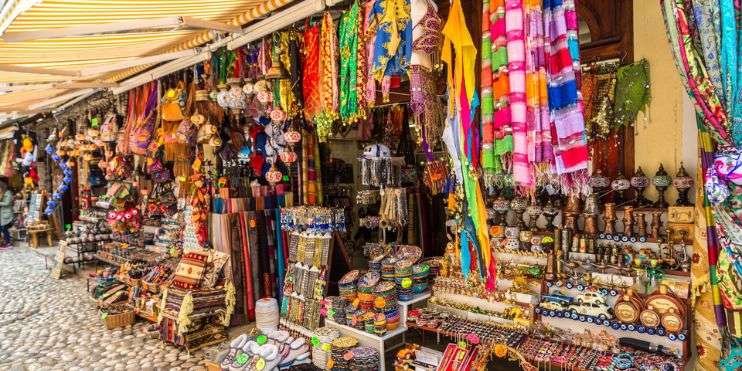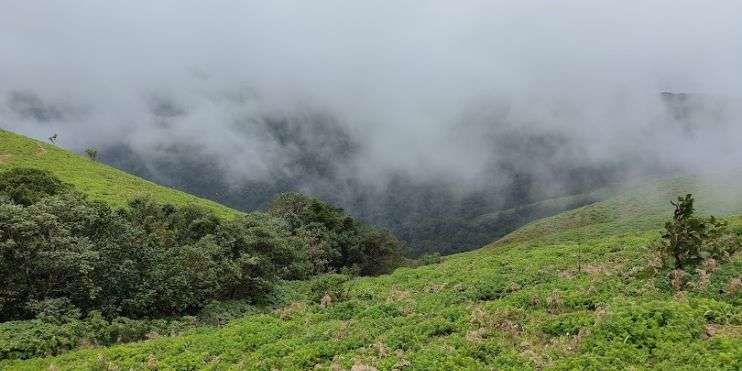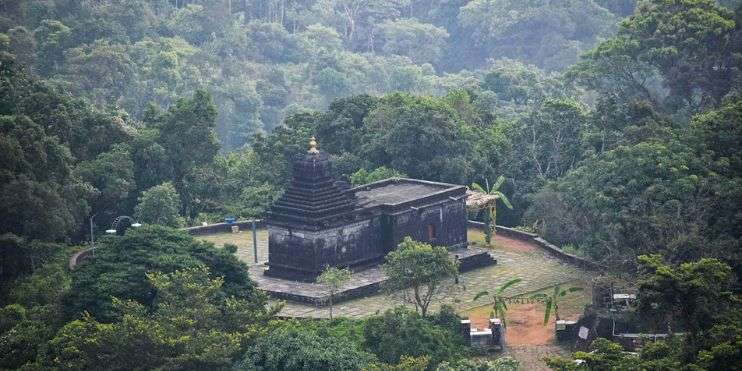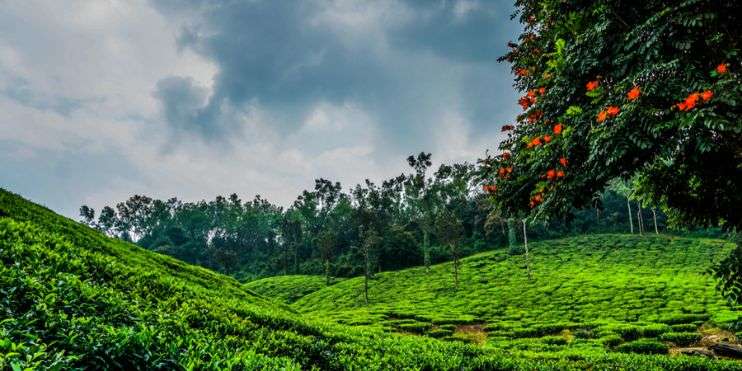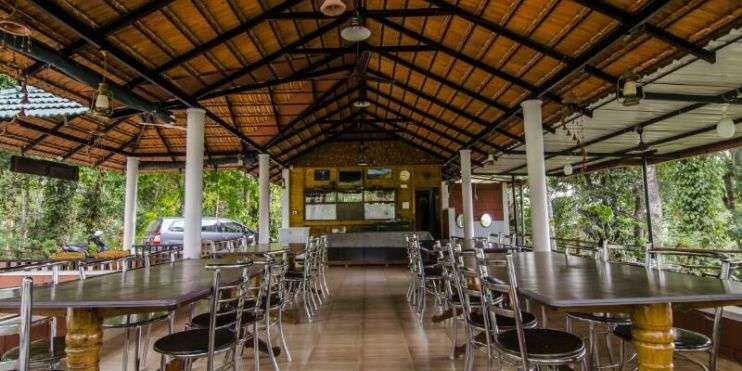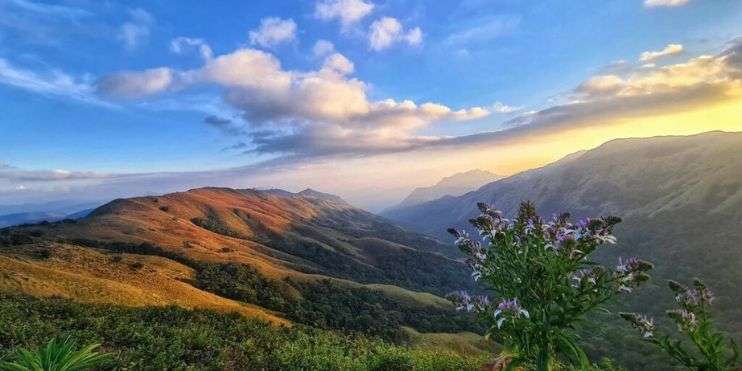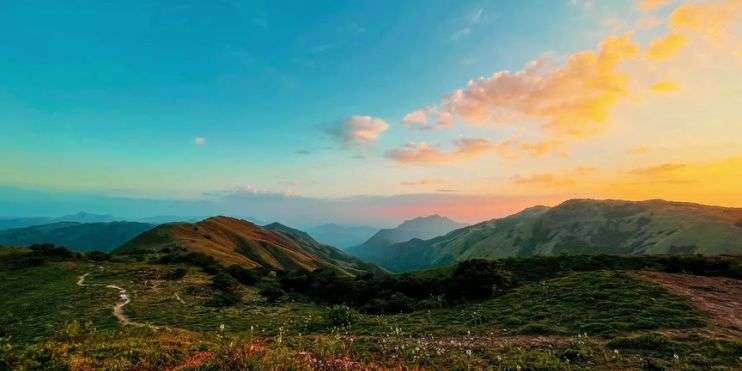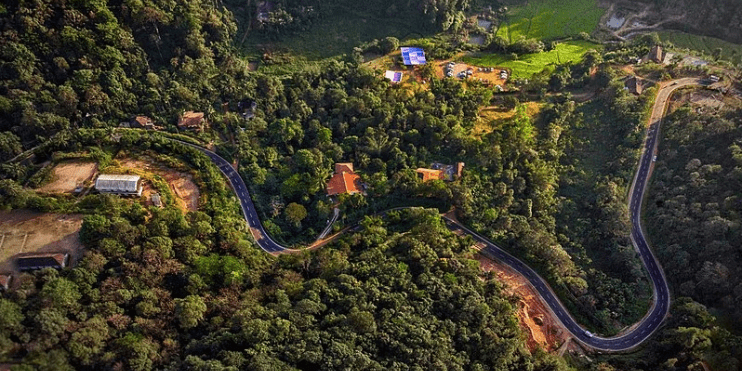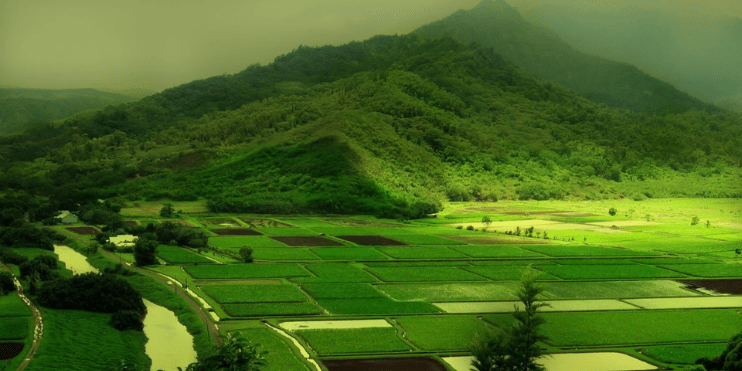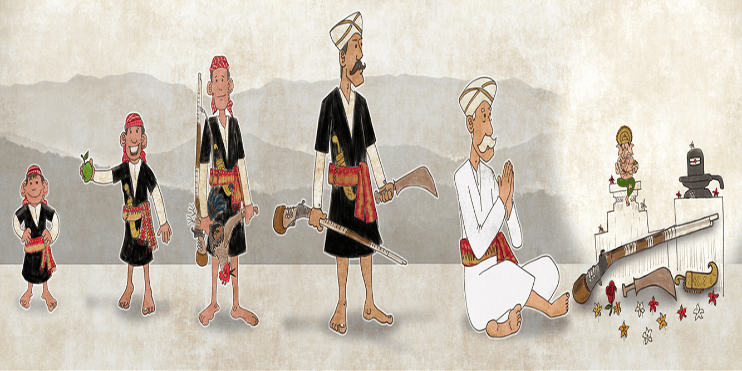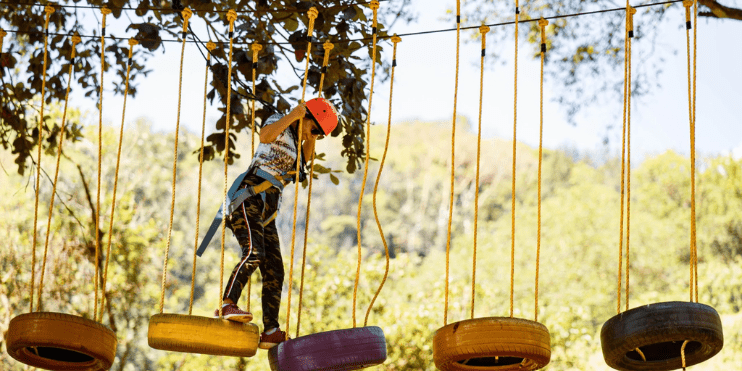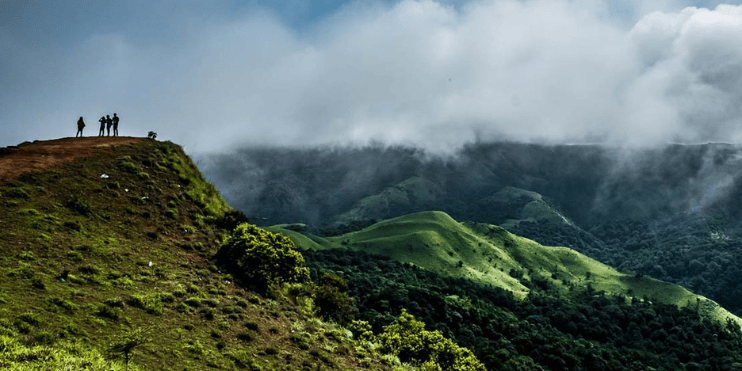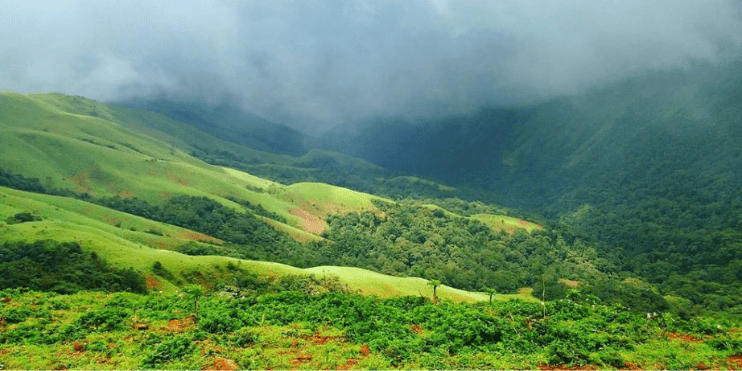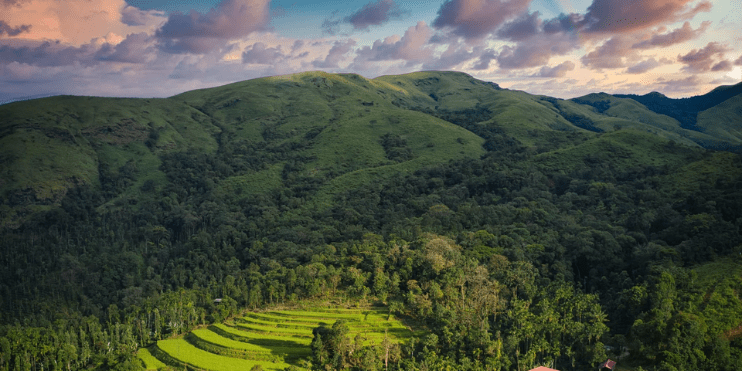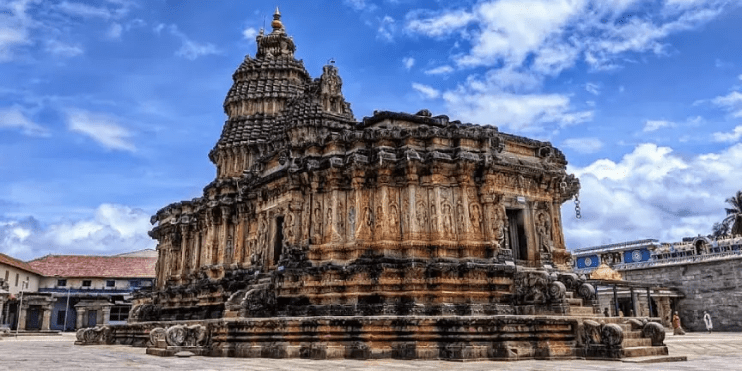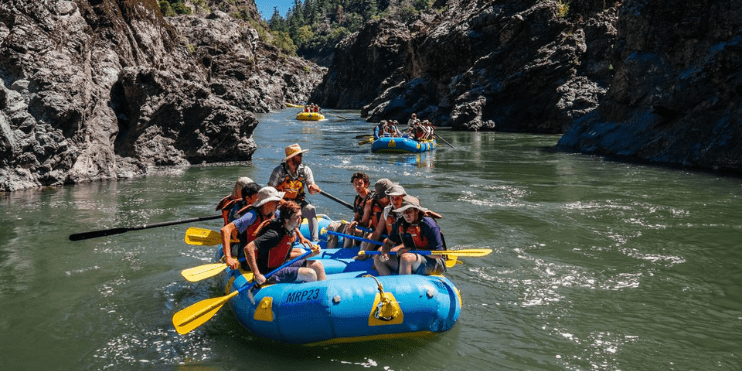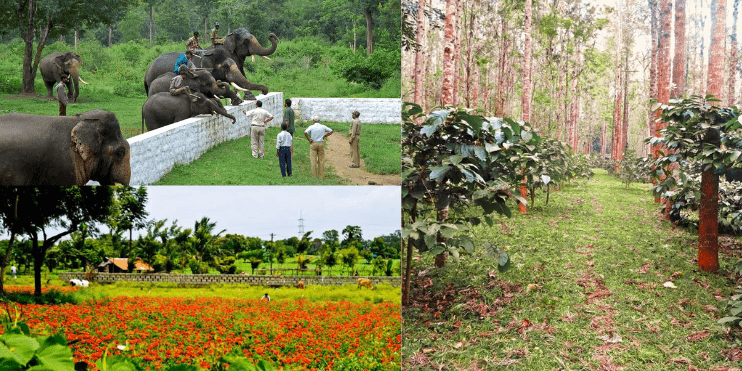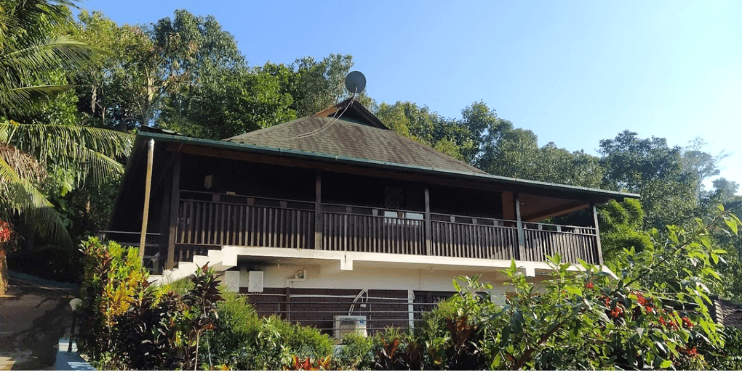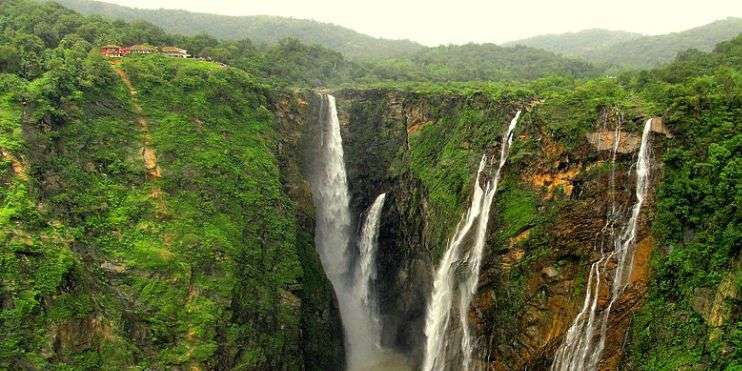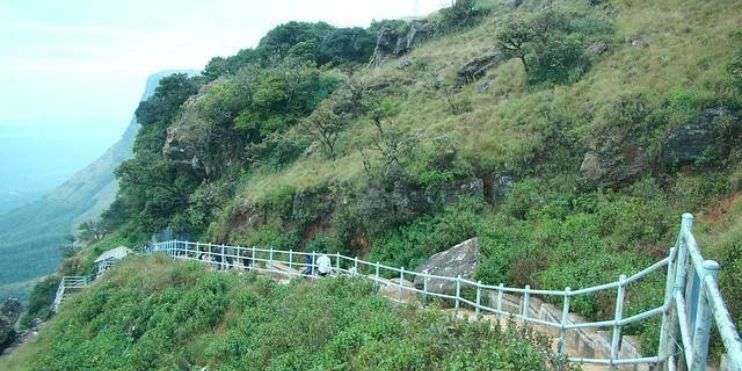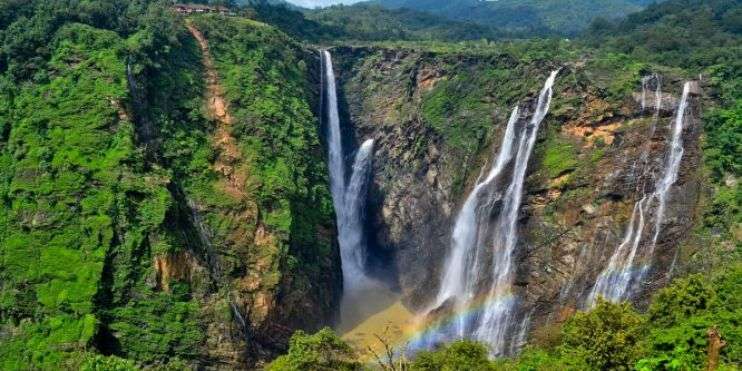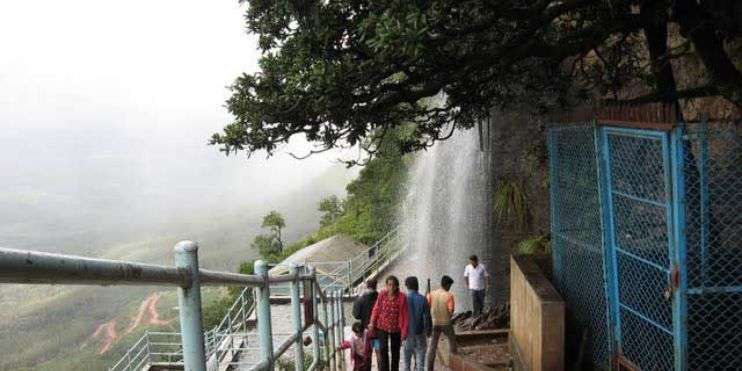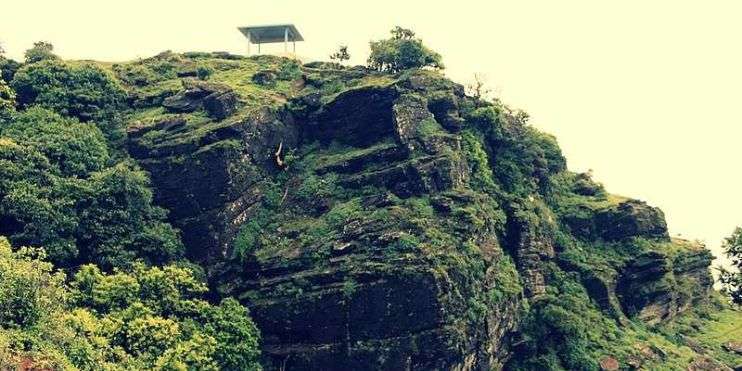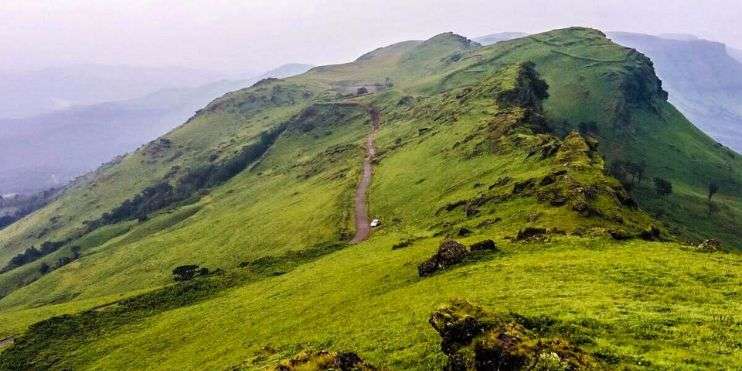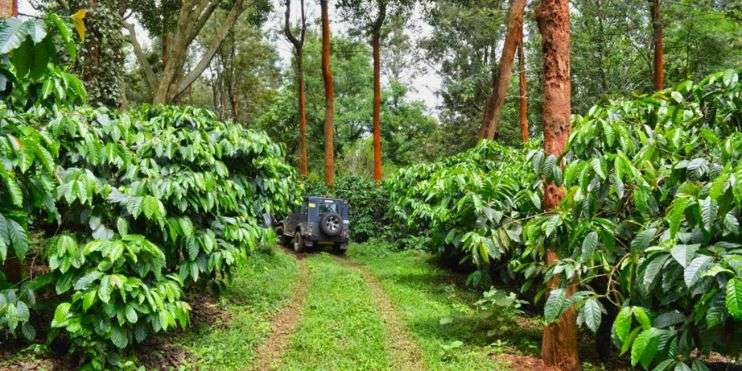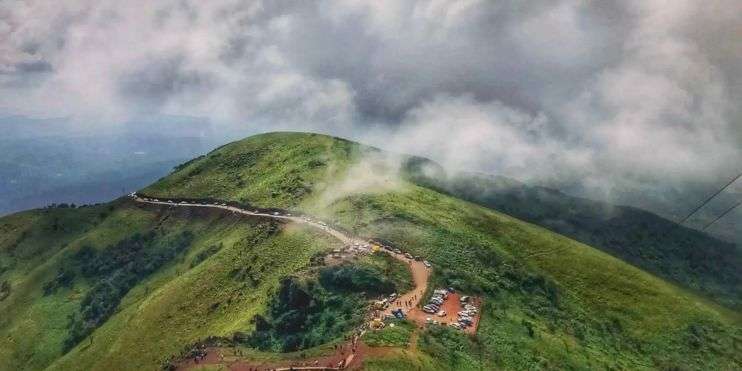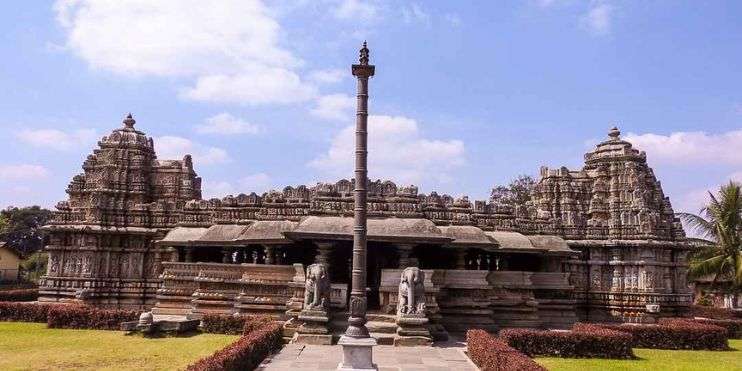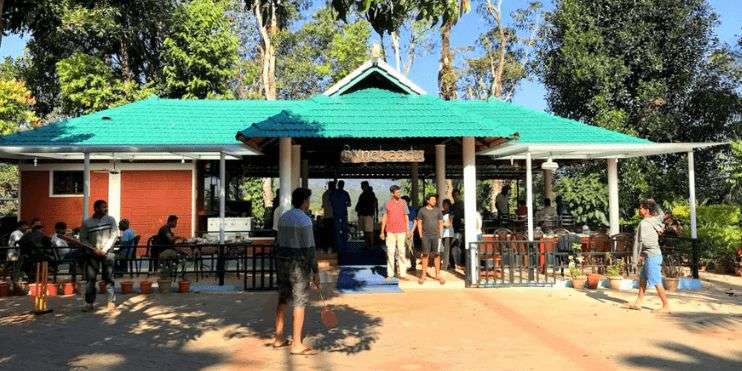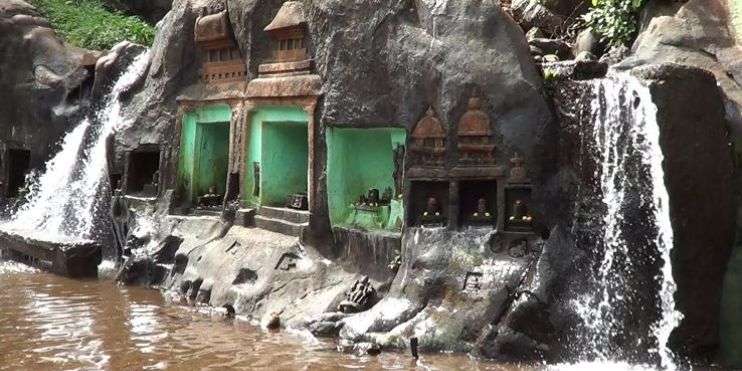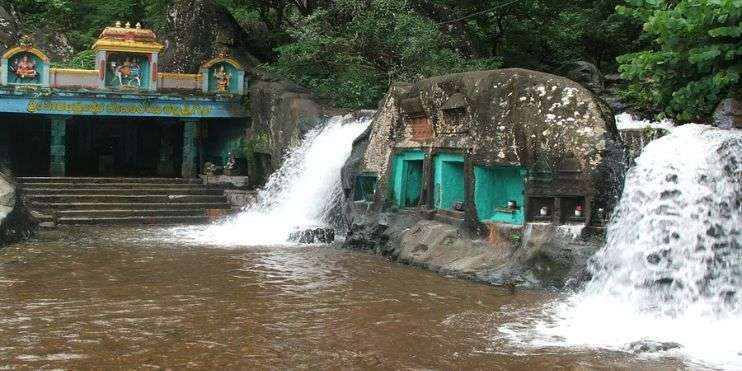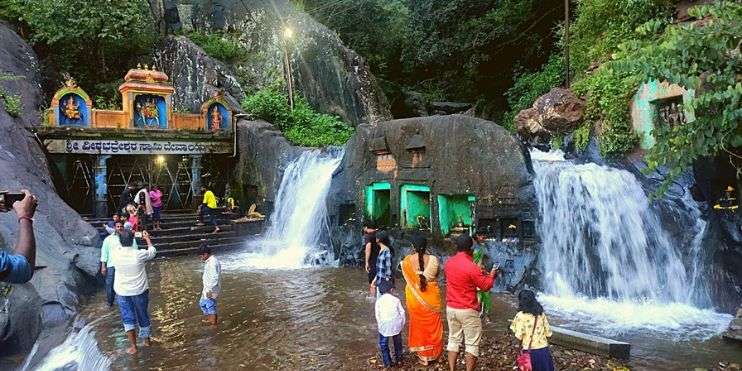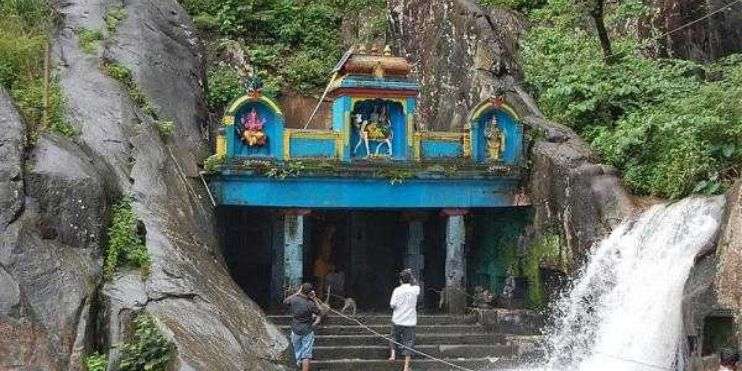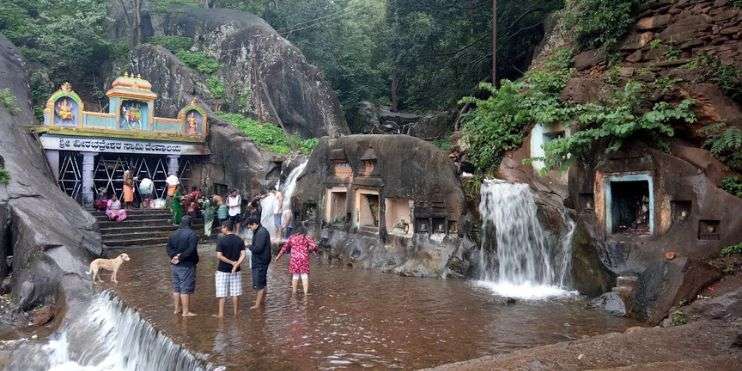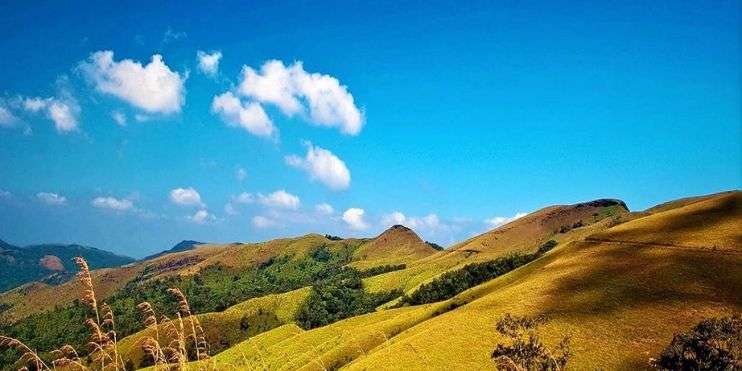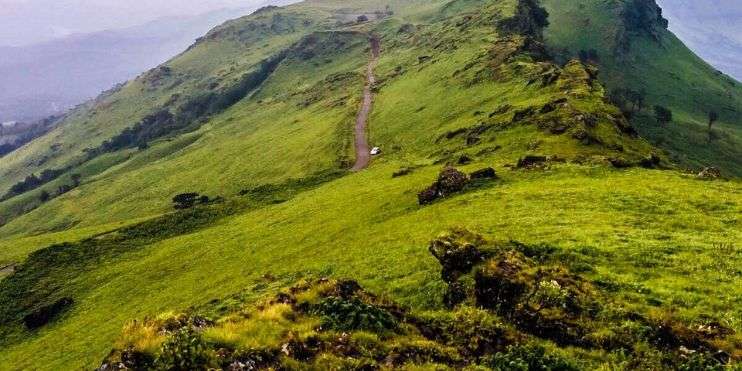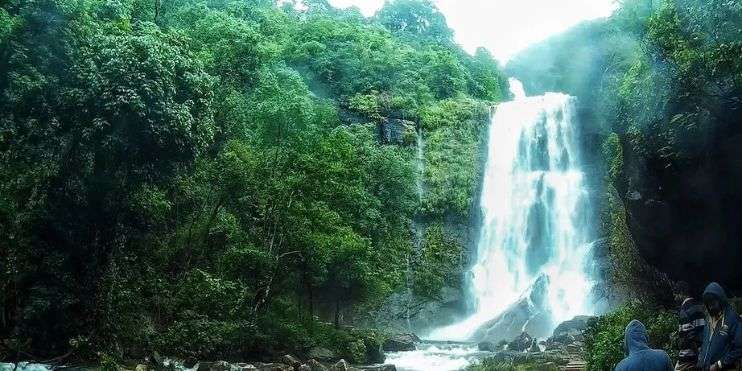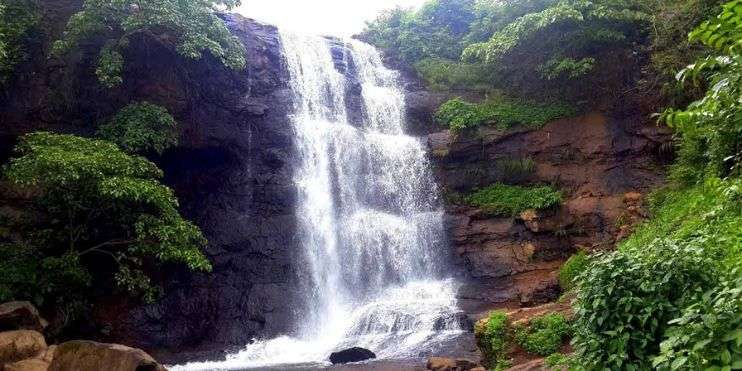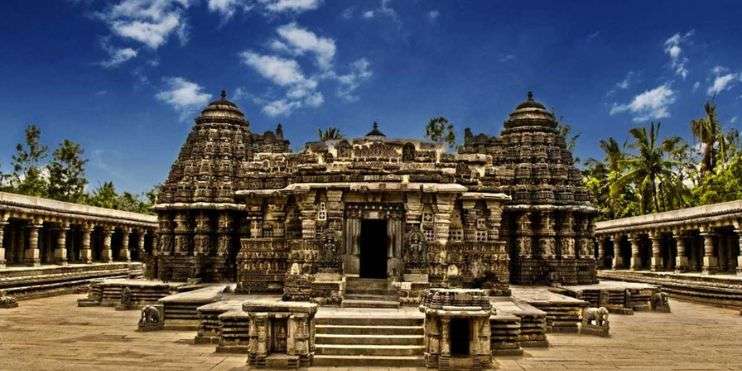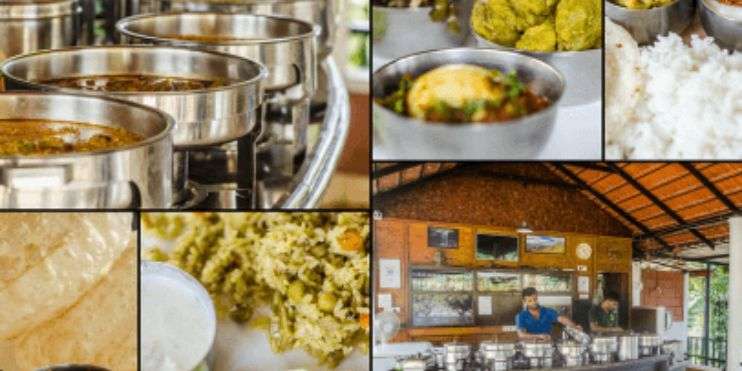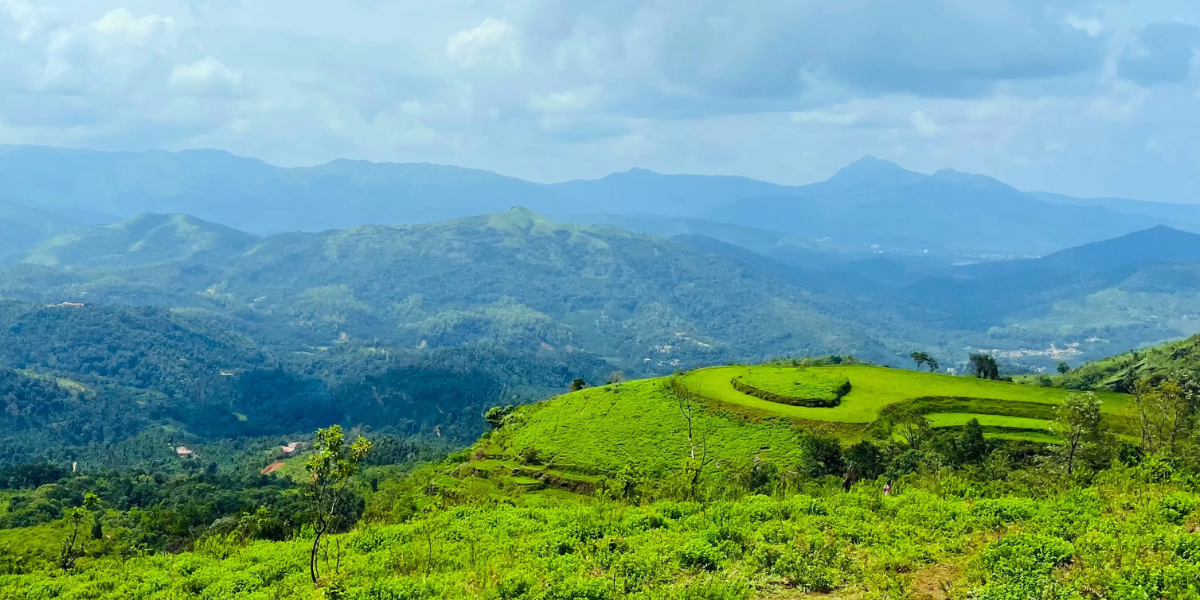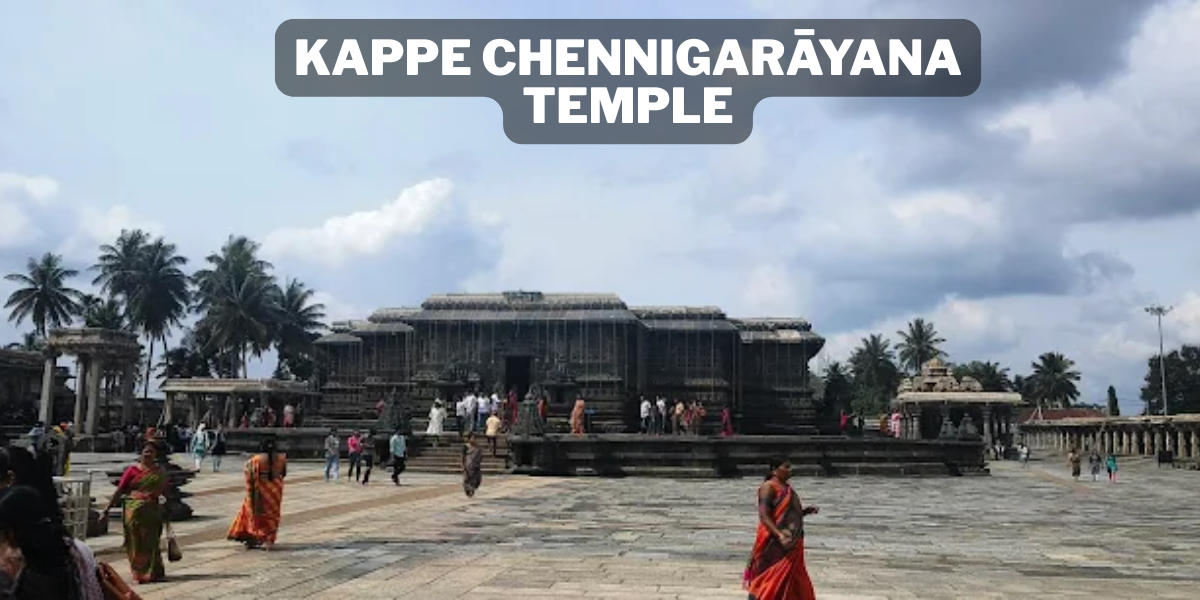Kalasa, a charming town in Karnataka’s Western Ghats, is an ideal retreat for those desiring peace and adventure. Surrounded by lush greenery and rich in spiritual heritage, Kalasa is an ideal escape from city life. This is the perfect time to explore the natural beauty and tourist places in Kalasa, as the temperatures are neither too hot nor too cold, allowing for a comfortable and enriching travel experience. This article aims to guide tourists through the best places to visit in Kalasa before winter sets in. Whether you’re traveling solo, with family, or with friends, Kalasa has something special for everyone.
Have You Discovered Kalasa? Your Gateway to Scenic Beauty Awaits!
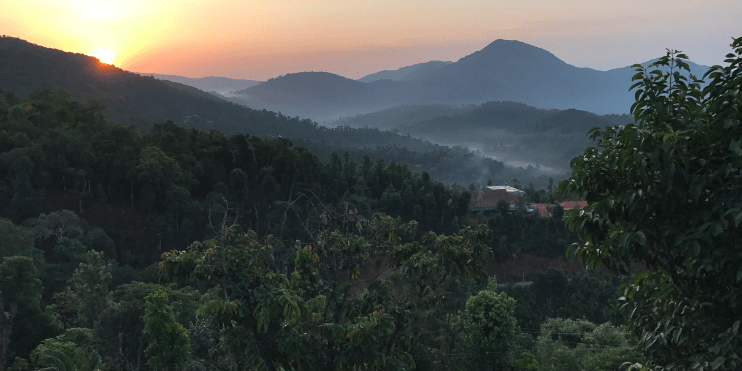
Location and Geography
Kalasa is located in the Chikmagalur district of Karnataka amidst the verdant landscapes of the Western Ghats. The town is situated along the banks of the Bhadra River, providing a picturesque setting for visitors. The hilly terrain, dense forests, and flowing rivers make Kalasa a haven for nature lovers and adventure seekers.
Historical Significance
Kalasa has a rich historical background, with roots tracing ancient Indian mythology. The town is believed to be associated with the legend of Sage Agastya, who installed the Kalaseshwara Temple here. Over the centuries, Kalasa has become a significant religious center, attracting pilgrims and history enthusiasts alike.
Cultural Heritage
The cultural heritage of Kalasa is deeply intertwined with its religious traditions. Festivals, rituals, and temple ceremonies play a crucial role in the lives of the locals. Visitors can engage in the vibrant culture of Kalasa by participating in these events and exploring the town’s historic temples and sites.
Natural Beauty and Attractions
Kalasa has abundant natural beauty, from lush green hills and valleys to pristine rivers and falls near Kalasa. The town offers a variety of attractions for nature enthusiasts, including trekking places near Kalasa, wildlife sanctuaries, and scenic viewpoints. The tranquil environment and untouched landscapes make Kalasa a perfect destination for reconnecting with nature.
“The best time to visit Kalasa for nature lovers is just after the monsoon when the surroundings are green and vibrant.”
Top 20 Must-Visit Kalasa Tourist Places: From Iconic Spots to Hidden Gems
Kalaseshwara Temple: A Premier Kalasa Tourist Place
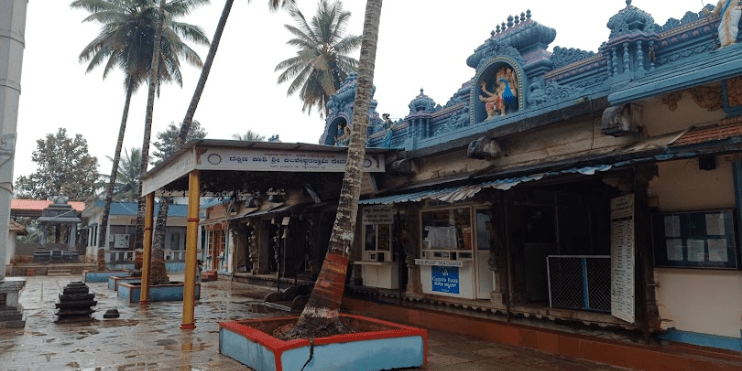
Kalaseshwara Temple, dedicated to Lord Shiva, is one of the most revered tourist places in Kalasa. The temple’s history dates back several centuries and is closely linked to the legend of Sage Agastya, who is said to have installed the deity. This temple is a must-visit for those interested in exploring the religious and historical significance of Kalasa.
Architectural Splendor of Kalaseshwara Temple
The temple is a fine example of traditional South Indian architecture, featuring intricately carved pillars, majestic gopurams (temple towers), and beautifully sculpted idols. The serene ambiance of the temple, combined with its architectural beauty, provides a peaceful retreat for visitors.
Experience the Spiritual Atmosphere
Kalaseshwara Temple holds great religious significance for Hindus, particularly those who follow Shaivism. A visit to this temple is believed to cleanse one’s soul and bring spiritual peace. The temple is also the focal point for many festivals and religious ceremonies, making it a vibrant place to visit in Kalasa during these times.
Tip: “Visit Kalaseshwara Temple early in the morning to experience the spiritual tranquility and avoid the crowds.”
Horanadu Annapoorneshwari Temple: A Top Destination Near Kalasa
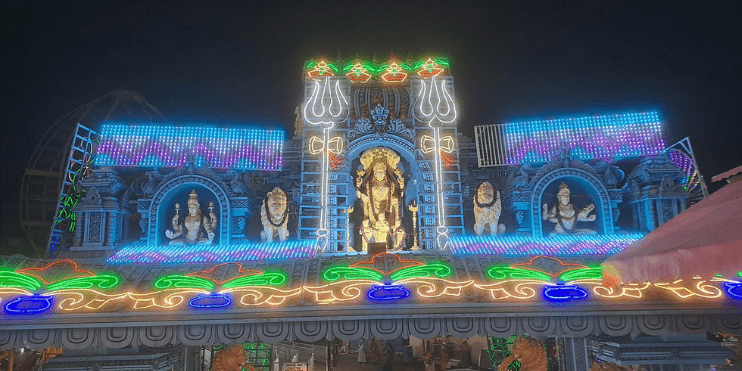
Horanadu Annapoorneshwari Temple is another prominent Kalasa tourist place dedicated to the goddess Annapoorneshwari, the deity of nourishment. This temple is a significant pilgrimage destination, attracting devotees from across the country who seek the goddess’s blessings for prosperity and abundance.
Spiritual Experience
The temple offers a unique spiritual experience, where devotees receive free meals (prasadam) to symbolize the goddess’s benevolence. The peaceful surroundings and the temple’s hospitality make it a spiritually uplifting experience for visitors.
Explore the Scenic Beauty of the Temple Surroundings
The shrine is tucked away in the Western Ghats’ breathtaking scenery, surrounded by lush green hills and flowing rivers. The journey to the temple is a treat for the eyes, with picturesque landscapes at every turn.
Note: “Combine your visit to Horanadu with a trip to the nearby tea estates and waterfalls for a full-day excursion.”
Rudrapada Temple: One of Kalasa Hidden Gems
Rudrapada Temple, located on the banks of the Bhadra River, is steeped in mythology. It is believed that Lord Shiva left his footprint (Rudrapada) here, making it a significant site for devotees. The temple is known for its spiritual aura and is an essential place near Kalasa.
Appreciate the Temple’s Simple Architecture
The temple’s architecture reflects the region’s traditional style, with simple yet elegant structures that blend seamlessly with the natural surroundings. The temple’s peaceful ambiance and scenic location make it a favorite among visitors.
Participate in Festivals and Local Events
Rudrapada Temple is the center of many festivals and religious events that are celebrated enthusiastically. These gatherings offer an insight into the vibrant cultural customs of Kalasa and are excellent opportunities to feel the spirit of the neighborhood.
Tip: “Visit during one of the temple festivals to witness the vibrant cultural celebrations.”
Vasishta Ashram: A Serene Spot in Kalasa
Vasishta Ashram is a spiritual retreat that offers a serene environment for meditation and introspection. The ashram is named after the sage Vasishta, one of the seven great sages of Hinduism. It is a tranquil place to visit in Kalasa, where visitors can disconnect from the world and immerse themselves in spiritual practices.
Historical Background of Vasishta Ashram
The ashram has a long history and is believed to have been a place of meditation for many sages over the centuries. Its historical significance adds to its allure, making it a well-liked location for people looking for spiritual comfort.
Enjoy the Peaceful Visitor Experience
Visitors to Vasishta Ashram often speak of the peaceful atmosphere and calm that pervades the place. The ashram offers various spiritual activities, including yoga and meditation sessions, making it an ideal retreat for those looking to rejuvenate their mind and body.
“Pack light and comfortable clothing if you plan to participate in meditation or yoga sessions at the ashram.”
Amba Teertha: A Sacred Spot in Kalasa
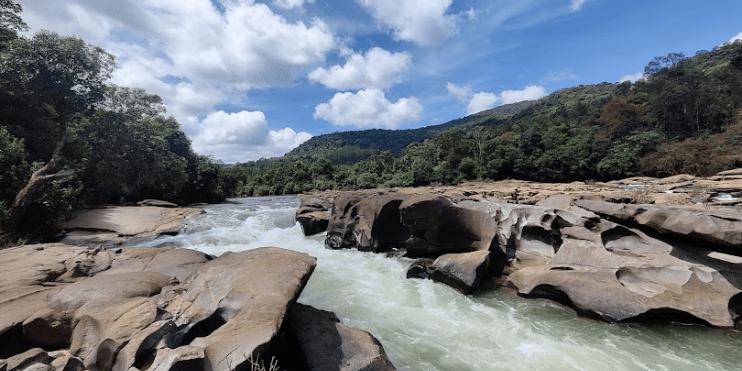
Amba Teertha is a sacred place to visit near Kalasa, believed to be blessed by the presence of the goddess Parvati. The site holds great historical and religious significance, attracting devotees who offer prayers and dip in the holy waters.
Experience the Tranquil Natural Beauty of Amba Teertha
The natural beauty surrounding Amba Teertha adds to its spiritual charm. The site is located amidst lush greenery, with the sound of running water generating a peaceful ambiance that heightens the spiritual encounter.
Explore Nearby Attractions
Amba Teertha is located near several other places to visit near Kalasa, including temples and scenic spots, making it an ideal addition to your Kalasa trip plan. It is easy for visitors to spend many hours exploring the area and enjoying the tranquil atmosphere.
Top Trekking Places in Kalasa
Kudremukh Peak: A Premier Trekking Destination in Kalasa
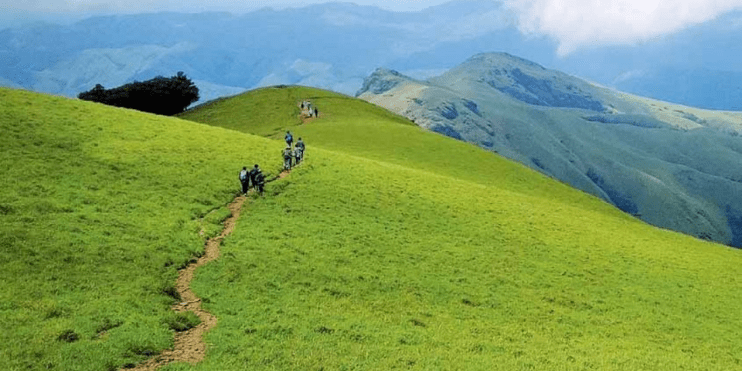
Kudremukh Peak is one of the most popular trekking places near Kalasa. The trek to the peak is moderately challenging, with a well-marked trail that takes you through dense forests, grasslands, and streams. The walk may take five to eight hours, depending on your pace and path.
Enjoy Breathtaking Views from the Peak
The trek to Kudremukh Peak offers breathtaking views of the Western Ghats. As you ascend, you’ll be rewarded with panoramic vistas of rolling hills, deep valleys, and mist-covered landscapes. The peak itself provides a 360-degree view that is nothing short of spectacular.
Best Time for the Trek
October through February are ideal for the Kudremukh trek, as they follow the monsoon season. The weather and landscape are excellent during this period, making the trek more enjoyable.
Tip: “To avoid the afternoon heat and to ensure you have enough time to see the views at the summit, start your hike early in the morning.”
Ballalarayana Durga: Explore This Historic Trekking Spot Near Kalasa

Ballalarayana Durga is a historic fort located atop a hill near Kalasa. The fort provides a window into the area’s rich history and stretches back to the Hoysala dynasty. Families and novice hikers can enjoy the comparatively easy journey to the fort.
Trek Through Scenic Forests and Grasslands
The trekking route to Ballalarayana Durga is well-defined, taking you through scenic forests and open grasslands. The trail is dotted with viewpoints where you can stop to take in the beauty of the surroundings. The trek is short, usually taking 2 to 3 hours to complete.
Admire the Panoramic Views from the Fort
Because of its elevation, the fort provides breathtaking views of the surrounding valleys and the Western Ghats. The lush greenery and the fort’s ancient ruins establish a gorgeous scene that will appeal to those who love taking images.
Note: “Carry sufficient water and snacks, as there are no facilities along the trekking route.”
Kurinjal Peak: A Challenging Trekking Experience Around Kalasa
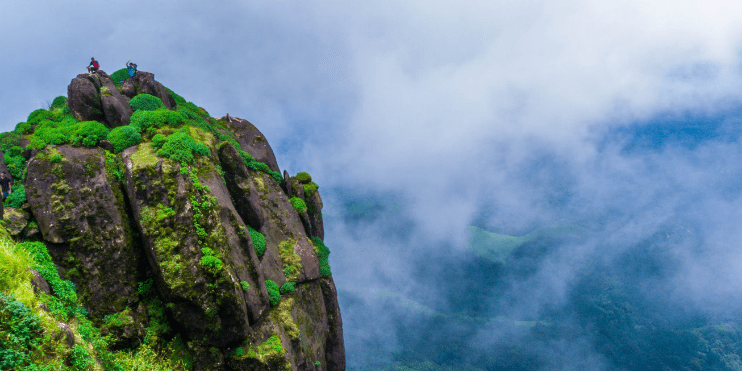
Kurinjal Peak is known for its challenging trek, which is recommended for experienced trekkers. The trail is steep in sections and requires a good fitness level. However, the effort is well worth it, as the trek offers some of the best views in the region.
Explore Diverse Flora and Fauna
Hiking Kurinjal Peak passes through various environments, including broad meadows and deep woods. Along the way, A wide range of plants and animals, including uncommon plant species and animals like deer and langurs, will be present.
Best Trekking Season
The ideal time to trek to Kurinjal Peak is between October and March when the weather is excellent, and the trail is in good condition. The trail can become hazardous and slick during the monsoon season, so avoid trekking.
Charmadi Ghat: Trekking and Scenic Beauty Near Kalasa
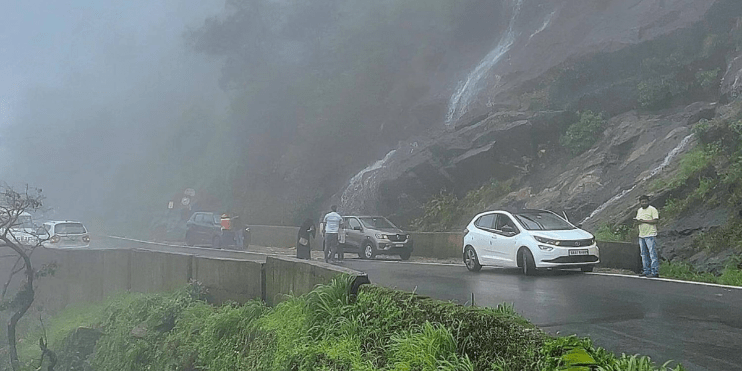
Charmadi Ghat offers several trekking routes, ranging from easy to complex. These routes take you through dense forests, along ridge lines, and up to panoramic viewpoints. The ghat is part of the Western Ghats mountain range, known for its biodiversity and scenic beauty.
Scenic Views of Rolling Hills and Waterfalls
Rolling hills, deep valleys, and cascading waterfalls characterize the landscapes of Charmadi Ghat. The area is often shrouded in mist, adding a mystical quality to the scenery. Trekking through Charmadi Ghat is a feast for the senses, with every turn revealing a new vista.
Trekking Tips
When trekking in Charmadi Ghat, it’s essential to be well-prepared. The weather can change suddenly, and the trails might be challenging. Carry sufficient water, wear appropriate clothing, and consider hiring a local guide to navigate the less clearly marked trails.
Samse Tea Estate Trek: Unique Trekking Experience Near Kalasa
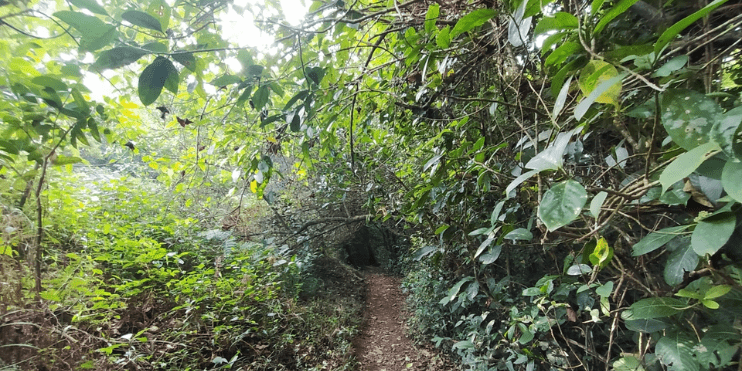
The Samse Tea Estate Trek offers a unique experience that combines trekking with a visit to a working tea plantation. The hike passes through verdant fields of green tea, providing an opportunity to learn about tea cultivation while enjoying the area’s natural beauty.
Enjoy Scenic Views of Tea Fields and Hills
The views from the Samse Tea Estate are nothing short of breathtaking. The neatly arranged tea bushes stretch out across the rolling hills, creating a sea of green that is mesmerizing to behold. The estate is also home to various bird species, making it a great place to see birds.
Trekking Logistics
Finishing the comparatively easy journey to Samse Tea Estate takes a few hours. It’s suitable for all age groups and requires no special equipment. The estate is located near Kalasa, making it an easy addition to your itinerary.
Top Waterfalls in Kalasa
Soormane Falls: A Must-See Waterfall in Kalasa
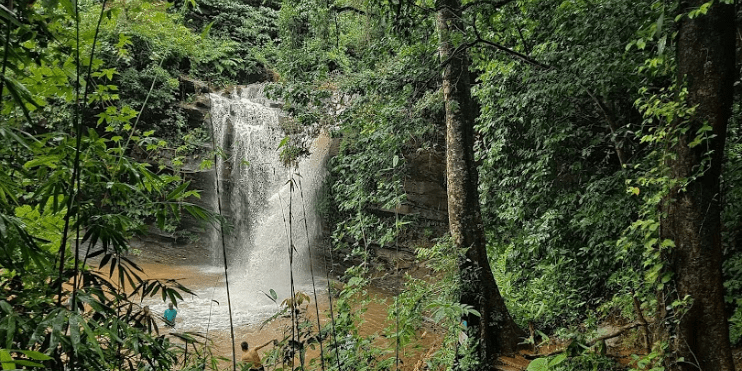
Soormane Falls is one of the most beautiful waterfalls near Kalasa. The waterfall creates a unique visual spectacle as it cascades down steep steps. The surrounding forest adds to the beauty, making it a perfect spot for nature lovers and photographers.
Best Time to Visit
The best time to visit Soormane Falls is during the post-monsoon season when the water flow is strong and the surrounding landscape is lush and green. The cool breeze and rushing water create a peaceful, relaxing environment.
Nearby Activities
In addition to admiring the falls, visitors can enjoy short hikes in the surrounding forest or picnic by the water. The area around Soormane Falls is relatively undeveloped, offering a chance to enjoy nature in its pristine form.
“Wear waterproof shoes or sandals, as the area around the falls can be slippery and wet.”
Hanuman Gundi Falls: A Hidden Waterfall in Kalasa

Hanumana Gundi Falls is another stunning waterfall in the Kalasa region. The thick woodland that envelops the waterfall creates a remote, peaceful ambiance. The water tumbles down from a height, creating a refreshing pool at the base that is perfect for a dip.
Enjoy the Serene Surroundings of the Falls
Hanumana Gundi Falls is easily accessible by road and is a short walk from the parking area to the falls. The path is well-maintained, making it suitable for visitors of all ages. Visiting the waterfall early in the day is recommended to avoid crowds since it’s a popular spot for locals and visitors.
Nearby Attractions
Several other attractions near Hanumana Gundi Falls include temples and trekking trails. The falls are the main attraction in the area, and visitors may easily spend a day exploring it.
Tip: “Bring a towel and change of clothes if you plan to take a dip in the refreshing waters at the base of the falls.”
Kadambi Falls: A Tranquil Waterfall in Kalasa
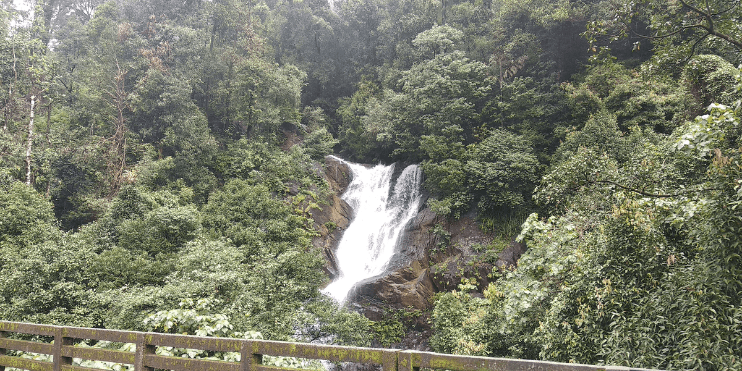
Kadambi Falls is known for its picturesque setting, with water cascading down a rocky cliff into a clear pool below. The waterfall is surrounded by dense greenery, making it a peaceful and beautiful spot. The sound of the water and the cool mist create a refreshing atmosphere.
Best Visiting Time
The best time to visit Kadambi Falls is during the monsoon or post-monsoon season when the water flow is at its peak. The falls are more minor than others in the region, but their beauty is no less impressive. The less crowded area makes it an excellent spot for a quiet retreat.
Safety Tips
While visiting Kadambi Falls, it’s important to exercise caution, as the rocks around the falls can be slippery. It’s advisable to wear sturdy footwear and avoid getting too close to the edge. Always follow safety instructions and keep the environment in mind.
Note: “Combine your visit to Kadambi Falls with a trek to one of the nearby peaks for a day filled with adventure and natural beauty.”
Elneer Falls: A Scenic Waterfall Adventure Near Kalasa
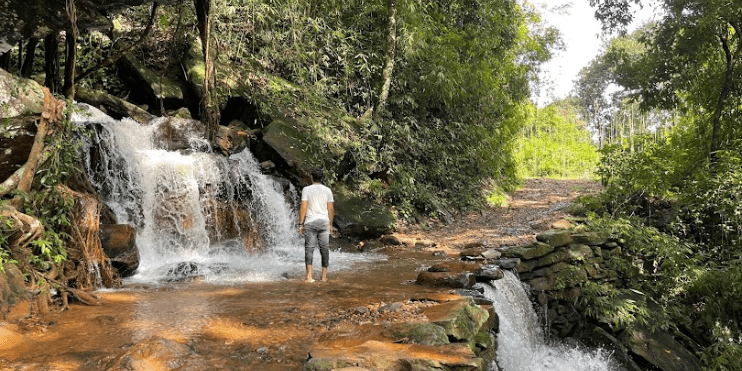
Elneer Falls is considered one of the hidden places in Kalasa. The waterfall is less known to tourists, making it a secluded spot where you can enjoy the beauty of nature in peace. The falls are surrounded by thick forest, and the clear, cold water is perfect for a refreshing swim.
Scenic Surroundings
The surroundings of Elneer Falls are incredibly scenic, with towering trees and rocky cliffs adding to the allure. The hike to the falls is quite simple and passes via lovely forest paths. The waterfall is perfect for those looking to escape the more crowded tourist places near Kalasa.
Activities Around
Apart from going to the falls, you can explore the nearby forest trails or picnic by the water. The area is also great for birdwatching, with many species of birds making their home in the surrounding forest. It’s an excellent spot for a day trip from Kalasa.
Tip: “Bring your own food and drinks, as there are no facilities near Elneer Falls. Also, ensure to take all your trash with you to preserve the natural beauty of the area.”
Kallathigiri Falls: Accessible Beauty Near Kalasa

Kallathigiri Falls is not just a natural wonder but also holds historical significance. It is thought that Agastya, the renowned sage, meditated here, and the locals consider the falls sacred. The waterfall is also known for its healing properties, with the water said to cure various ailments.
Natural Beauty
The waterfall is surrounded by natural beauty, with lush greenery and rocky formations providing a picturesque backdrop. The water cascades down in steps, creating a mesmerizing effect. The area around the falls is also home to a small temple, adding to its spiritual ambiance.
Accessibility
Kallathigiri Falls is easily accessible by road and requires a short walk to reach the falls from the parking area. The path is well-maintained, and the falls are famous for locals and tourists. It’s a great place to visit for a quick getaway from Kalasa.
Top Spiritual Kalasa Tourist Places
Shri Veerabhadra Swamy Temple
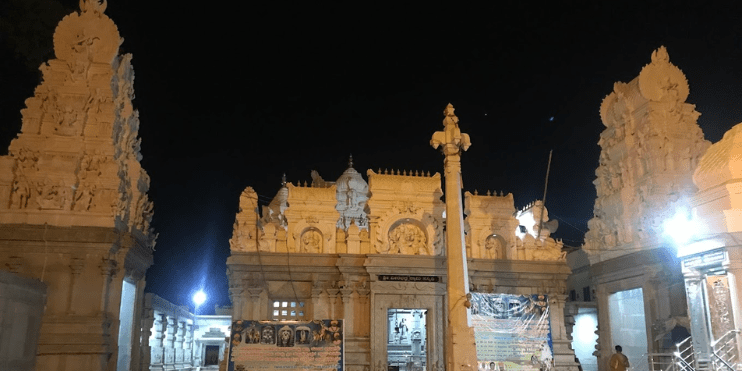
Shri Veerabhadra Swamy Temple is a prominent spiritual place to visit in Kalasa. It is dedicated to Lord Veerabhadra, a fierce form of Lord Shiva. Residents and worshippers who come to the temple to ask for the deity’s blessings hold it in high regard, known for his protective and warrior qualities. This temple is a spiritual hub, especially for those who believe in the power of Lord Shiva’s different manifestations.
Unique Architecture
The architecture of Shri Veerabhadra Swamy Temple is distinctive, with a blend of traditional South Indian design elements and local influences. The temple complex is simple yet exudes a powerful spiritual aura. The inner sanctum houses the main deity and is surrounded by beautiful nature; the temple offers a tranquil setting ideal for prayer and meditation.
Spiritual Practices
Devotees often engage in special rituals and ceremonies at the temple, particularly during the annual Veerabhadra Jayanthi festival. The temple is also known for its community gatherings, where locals participate in prayers and cultural activities. The spiritual practices here are deeply rooted in tradition, offering visitors a glimpse into the region’s rich religious heritage.
Tip: “Visit the temple during early morning hours to witness the peaceful rituals and avoid the crowds.”
Kanchi Kamakshi Temple
Kanchi Kamakshi Temple in Kalasa is dedicated to Goddess Kamakshi, a form of Goddess Parvati. The temple is a significant location for pilgrims who are Shakti devotees (the divine feminine), and it is believed that worshiping here brings prosperity and fulfills the wishes of devotees. The divine presence in the temple is said to be very powerful, making it a must-visit for spiritual seekers.
Tranquil Environment
The shrine is situated in a serene area, surrounded by natural beauty. The peaceful environment enhances the spiritual experience, connecting visitors deeply with the divine. The temple is known for its calming energy, making it an ideal place for meditation and reflection.
Cultural Celebrations
Kanchi Kamakshi Temple is also a center for cultural and religious celebrations. Festivals such as Navaratri and Diwali are celebrated enthusiastically, drawing large crowds of devotees. During these times, the temple is adorned with lights and flowers, and special poojas (rituals) are conducted, creating a vibrant spiritual atmosphere.
Note: “If possible, time your visit during one of the major festivals to experience the temple’s vibrant cultural and spiritual energy.”
Subramanya Temple
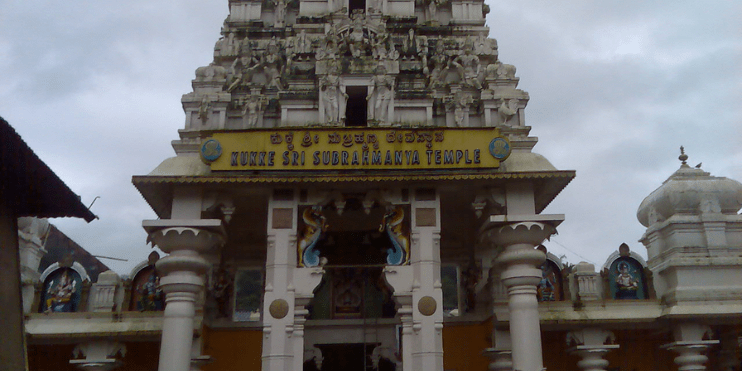
Subramanya Temple in Kalasa is dedicated to Lord Murugan, also known as Subramanya, who is revered as the god of war and victory. The temple is particularly popular among devotees seeking courage, strength, and protection. Worshiping Lord Murugan here helps people overcome obstacles and succeed in various endeavors.
Architectural Charm
The temple’s architecture is simple yet charming, reflecting the local style of temple construction. The Lord Murugan idol is kept in the sanctum sanctorum, and the temple is surrounded by a peaceful garden where visitors can sit and meditate. The temple’s design and layout encourage introspection and spiritual connection.
Spiritual Gatherings
The temple is a focal point for spiritual gatherings and community events. Regular poojas and rituals are conducted, and the temple bustles during the Tamil month of Thai, which is considered auspicious for worshiping Lord Murugan. The temple’s spiritual gatherings allow devotees to unite and share their faith.
“Attend the early morning or evening aarti (prayer) sessions for a spiritually uplifting experience.”
Sri Annapoorneshwari Temple, Agumbe
Located near Kalasa, the Sri Annapoorneshwari Temple in Agumbe is another significant spiritual site. Devotion to Goddess Annapoorneshwari, the goddess of nourishment and sustenance, is held in the temple. Devotees visit this temple to seek the goddess’s blessings for prosperity, health, and abundance. The temple is renowned for its peaceful and nurturing energy.
Scenic Location
The temple is set in the scenic landscape of Agumbe, surrounded by dense forests and mist-covered hills. This natural beauty adds to the spiritual experience, making it a perfect retreat for connecting their spiritual journey with nature.
Pilgrimage Importance
The temple is an important pilgrimage site for many devotees, particularly during the annual Annapoorneshwari Jayanthi festival. During this time, the temple sees many devotees, and special rituals and offerings are made to the goddess. All guests are also given free meals at the temple, which aligns with the goddess’s role as the provider of nourishment.
Tip: “Combine your visit to the temple with a trip to the nearby Agumbe Rainforest for a unique blend of spirituality and nature exploration.”
Guru Dattatreya Bababudan Swamy Darga
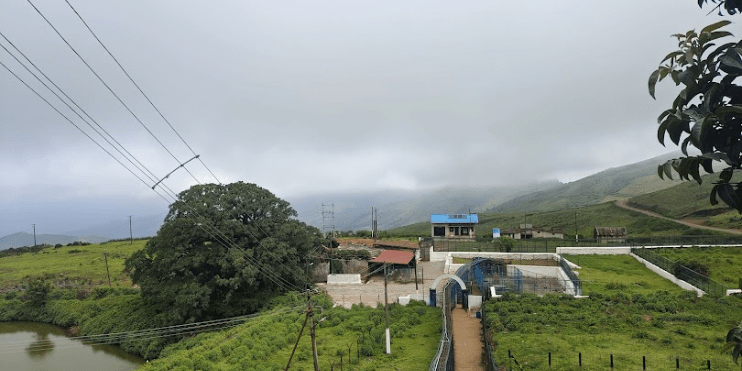
Guru Dattatreya Bababudan Swamy Darga, located near Kalasa, is a unique spiritual site that blends Hindu and Islamic traditions. The darga is dedicated to the Sufi saint Baba Budan and the Hindu deity Dattatreya, symbolizing the unity of different faiths. This site is a testament to the syncretic culture of the region and is revered by followers of both religions.
Pilgrimage and Rituals
The darga is an important pilgrimage site where devotees of both faiths come to offer prayers and seek blessings. The rituals blend Hindu and Islamic practices, creating a unique spiritual experience. The site is especially significant during the annual Urs festival, which attracts many pilgrims.
Historical and Cultural Significance
The darga is also historically significant, as it is associated with Baba Budan’s introduction of coffee cultivation in India. The site’s rich cultural history, combined with its spiritual importance, makes it a must-visit for those interested in exploring the diverse religious traditions of the region.
Planning Your Kalasa Trip
Ideal Itinerary
Planning a Kalasa trip requires careful consideration of the places to see in Kalasa and the activities you want to engage in. An ideal itinerary would include visits to the top spiritual sites, trekking places near Kalasa, and falls near Kalasa, with time set aside for relaxation and exploration of the local culture. Start your day early to make the most of your time, and consider staying in a Kalasa resort or Kalasa homestay to experience the local hospitality.
Transportation Options
Kalasa is well-connected by road, and the nearest railway station is Chikmagalur, where you can travel to Kalasa via bus or cab. The roads leading to Kalasa are scenic, offering beautiful views of the Western Ghats. If you’d rather travel slower, consider hiring a private vehicle, which allows you to stop and explore along the way.
Travel Tips and Recommendations
When traveling to Kalasa, pack comfortable clothing for trekking and exploring natural sites. Carry essentials like sunscreen, insect repellent, and a first-aid kit. When visiting temples and other spiritual locations, especially, be mindful of the customs and traditions of the locals. Keep an eye out for the environment, and don’t litter—Kalasa is renowned for its unspoiled natural beauty.
Tip: “Book your accommodation in advance, especially during the peak season, to ensure you have a comfortable stay.”
Bynekaadu: Your Perfect Retreat Before Winter
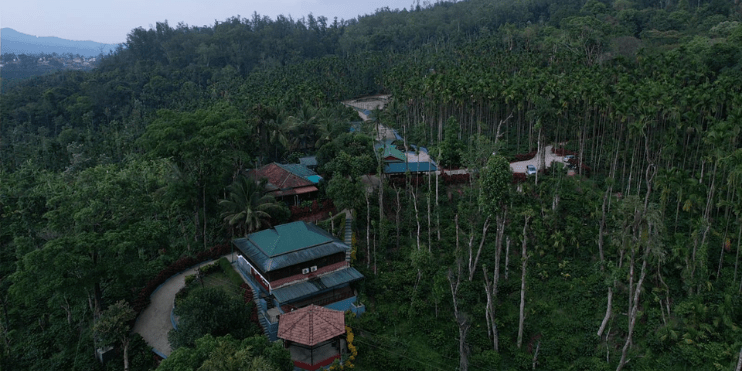
At Bynekaadu, we believe in offering a unique blend of nature, comfort, and adventure, making us the perfect destination for your pre-winter getaway. Nestled amidst the lush greenery of Kalasa, our resort provides a serene escape from the everyday hustle, with breathtaking views of the Western Ghats right from your doorstep.
Our Kalasa resort is not just a place to stay; it’s an experience. Whether exploring the nearby waterfalls, trekking through scenic trails, or simply relaxing in our cozy accommodations, Bynekaadu offers something for everyone. As a premier resort in Kalasa, we invite you to enjoy the crisp, chilly air before winter arrives. It’s the ideal time to relax, reconnect with nature, and rejuvenate your spirit.
For those seeking a more homely experience, Bynekaadu also offers a Kalasa homestay option, allowing you to immerse yourself in the local culture while enjoying all the comforts of a modern retreat. Whether you’re a nature enthusiast or simply looking for a peaceful escape, our Kalasa Resort Chikmagalur is your perfect pre-winter destination.
Conclusion
Kalasa is a hidden gem in the Western Ghats, offering a perfect blend of spiritual and natural attractions. From the ancient temples and spiritual retreats to the breathtaking trekking trails and waterfalls, Kalasa has something for everyone. The town’s serene environment and rich cultural heritage make it a must-visit destination for those looking to escape the hustle and bustle of city life and reconnect with nature and spirituality.
Visiting Kalasa before winter offers unique advantages, with pleasant weather, clear skies, and accessible roads. The natural beauty of Kalasa is at its peak during this time, with vibrant flora and fauna, and the waterfalls are still flowing with vigor. Regardless of your interests in spirituality, the outdoors, or adventure, Kalasa has something to offer, making it a perfect destination for a pre-winter getaway.
Take advantage of this opportunity to experience the best of Kalasa with us. Contact us today to book your stay at Bynekaadu and embark on an unforgettable journey into nature.

